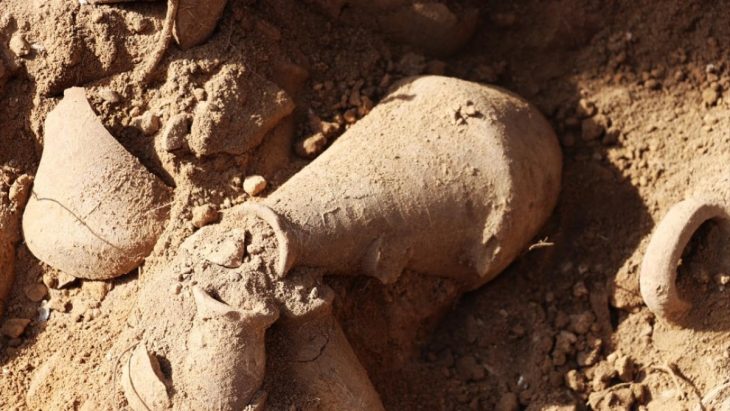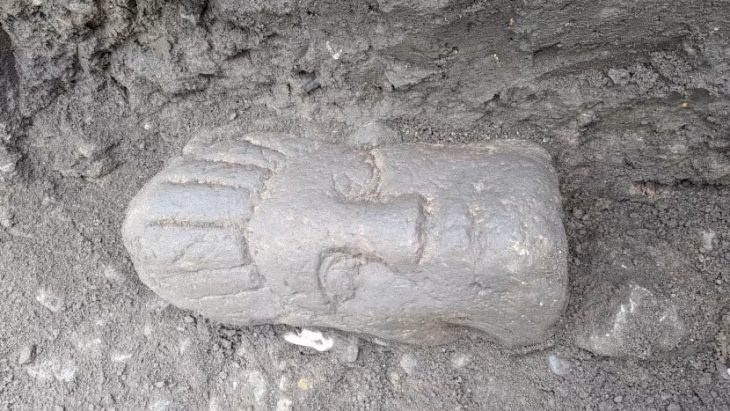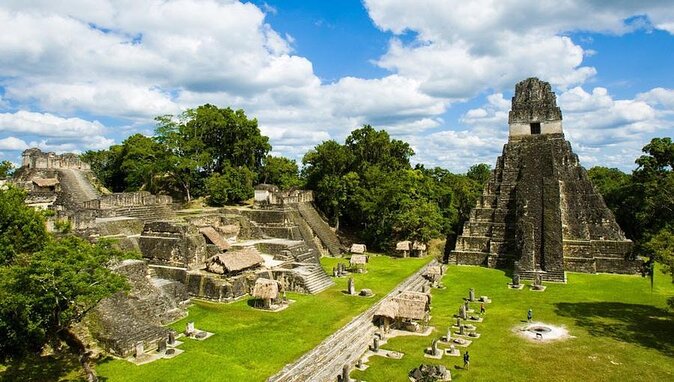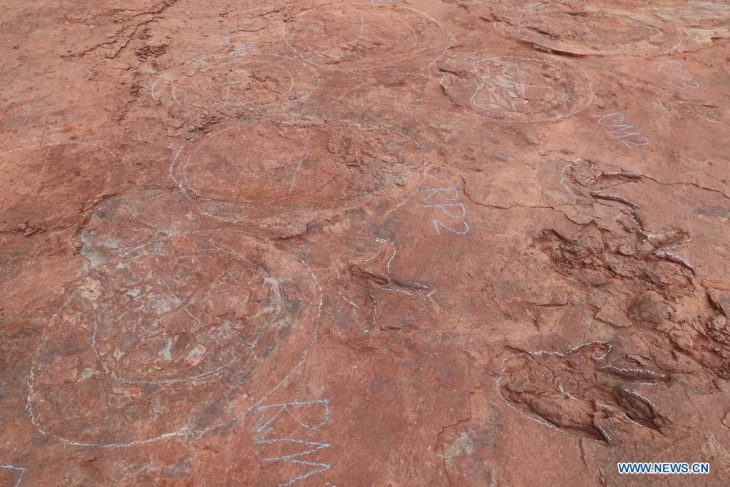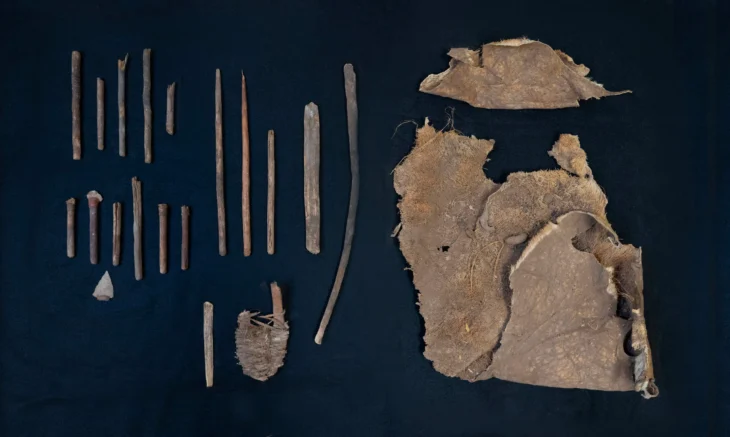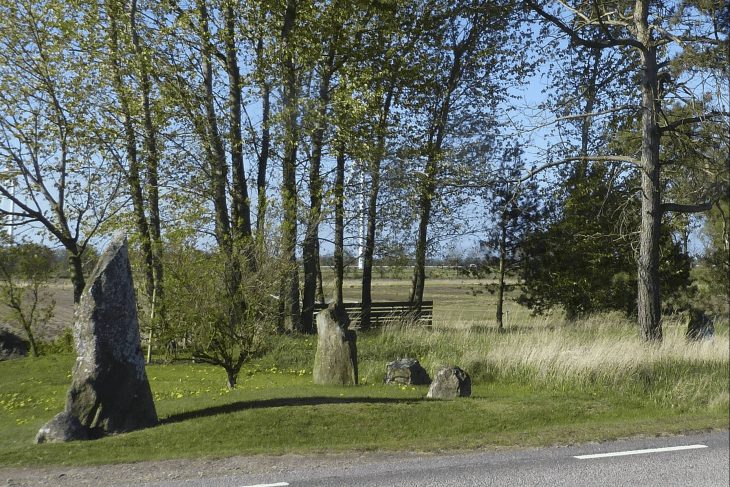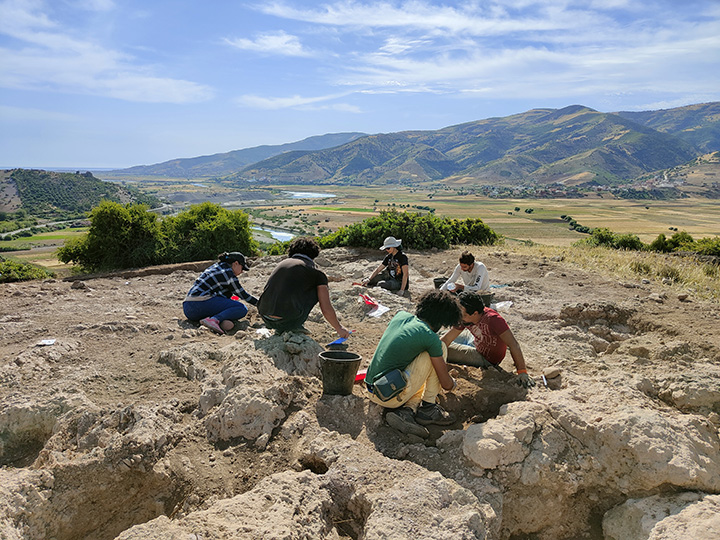According to the provincial archaeological research institute, archaeologists discovered a stone-carved silkworm chrysalis dating back at least 5,200 years in north China’s Shanxi Province last month.
The stone-carved chrysalis was discovered in a semi-crypt house at the Shangguo Site in Wenxi County, near the city of Yuncheng. It measures 2.8 cm long, with a maximum abdominal diameter of 1.2 cm.
Archaeologists surmised that this home dates to the early stage of the late Yangshao Culture era, some 5,200 years ago, based on pottery fragments that have been discovered.
The Yangshao culture was a Neolithic culture that existed extensively along the middle reaches of the Yellow River in China from around 5000 BC to 3000 BC.
This culture is famous for its red-painted pottery, one of the two main types produced in the neolithic period in China, and before 2000 BC Yangshao was making spiral red earthenware pots fired in ovens at 1000°C-1500°C.
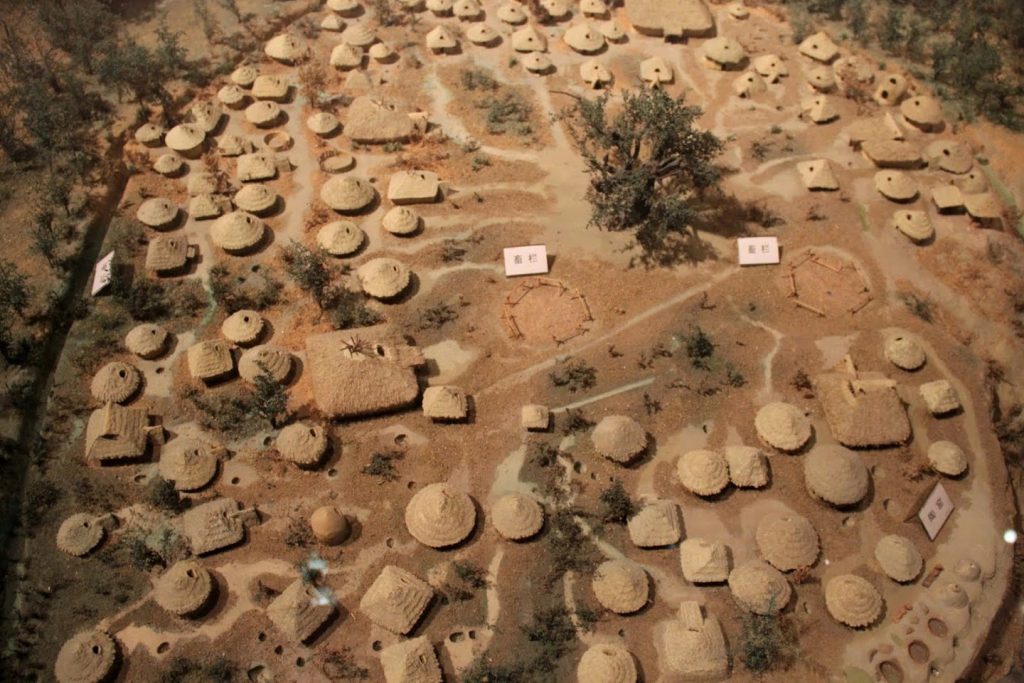
Yangshao artisans created fine white, red, and black painted pottery with human facial, animal, and geometric designs, and they did not use pottery wheels in pottery-making.
China News Service, Taiyuan, July 16 (Yang Peipei and Hu Jian) The Wenxi Shangguo site in Shanxi released the latest archaeological results on the 16th. The site unearthed the Yangshao period and pottery models in the early Spring and Autumn Period. The excavation further confirmed that the Shangguo site has two main periods, namely the middle and late Yangshao period and the late Western Zhou period to the Spring and Autumn period.
The excavation site in 2022 is selected to be adjacent to the west and north of the exploration in 2021. The excavation covers an area of 500 square meters. Various relics have been found, including 2 ash ditch, 56 ash pits (including 7 house sites in the Yangshao era), 2 stove sites, 1044 pottery models, 183 pottery ware, 14 jade ware, 157 stone tools, 123 bone tools, 4 small copperware, 7 copper slag, 46 shellfish, 2 ironware, 4 egg shells, and 1 fruit stone unearthed. 1585 pieces.

Among them, H50 is bag-shaped. Judging from the pottery pieces such as the red pottery and sand pots with piled patterns on the outside of the unearthed mouth, the white-robed pottery bowls, and the basket-shaped pointed bottom bottle belly pieces, they belong to the early stage of the late Yangshao period, about 5,200 years ago. The pit is divided into four layers, and a stone-carved silkworm chrysalis was unearthed in the first layer.
Over the past 100 years, relics related to the silkworm culture have been unearthed in many places in Yuncheng City, said Tian Jianwen, a researcher with the provincial archaeology research institute.
“At present, many silkworm cocoons and chrysalises discovered in Yuncheng City have been found in good condition, indicating that the ancestors of Yangshao Culture in southern Shanxi had raised silkworms,” said Tian. The discovery of stone carving chrysalises provided important clues for the study of the origin and spread of silk, according to Tian.
Cover Photo: H50 unearthed stone silkworm chrysalis. Photo by Wang Tao


